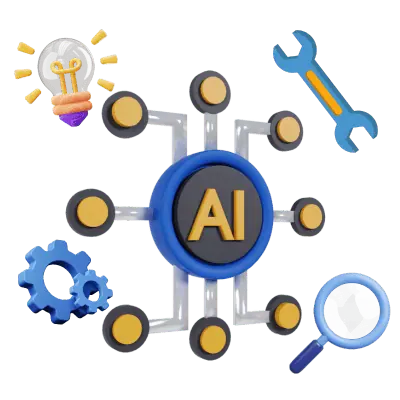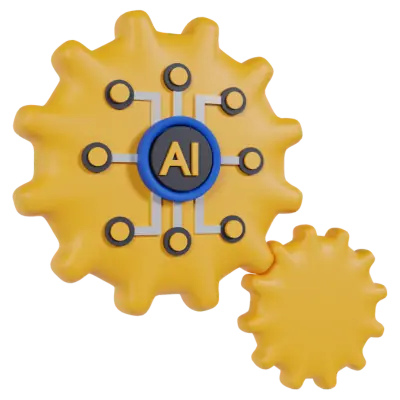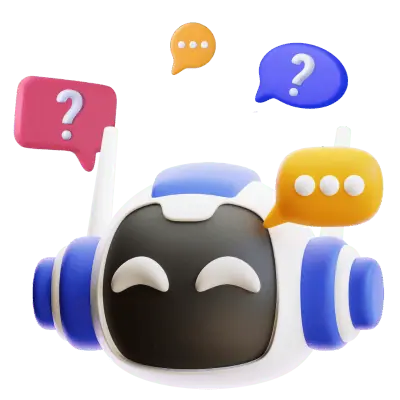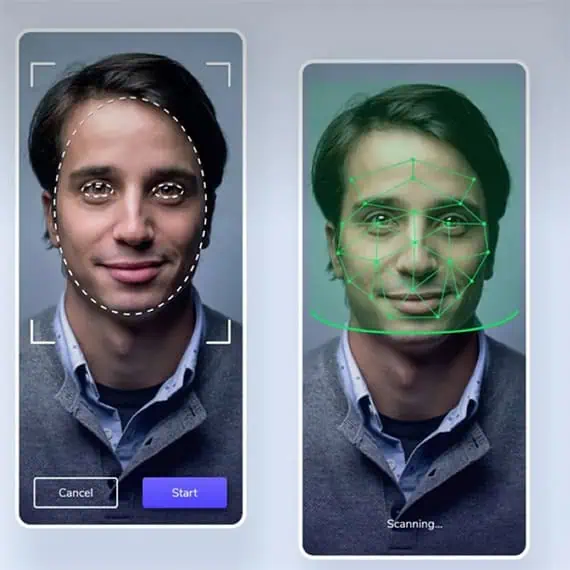What if you could find a romantic partner who not only shares your current interests but also lines up with the future you see for yourself?
Is it possible? How can technology possibly know what you’ll be interested in years from now? And how can it find you a significant other who will share not just what you are into now but what you’ll be into in the future? Sounds pretty out there!
But guess what? It’s not as far-fetched as it sounds-not when we have AI and a little something called predictive compatibility. Not convinced? Read on as we see how advanced algorithms can anticipate your changing preferences and match you with someone whose future interests match up with your own! It could be the answer to a great relationship that grows and adapts over time.
What Is Predictive Compatibility?
Predictive compatibility is a cutting-edge concept in the world of online dating and matchmaking. It leverages artificial intelligence (AI) and machine learning to go beyond the surface-level interests and preferences you might have today. Instead of just finding someone who loves the same movies and TV shows or shares your taste in music genres, predictive compatibility aims to match you with a partner whose interests, values, and goals are likely to evolve in sync with yours over time.
The conventional compatibility methods dating apps use now usually involve extensive questionnaires (looking at you and your 30-minute test, eharmony), personality assessments, astrological signs, and algorithms that look at your current preferences and habits. These systems pair you with someone who checks off the same boxes right now. But they can miss the mark when it comes to predicting how your interests and priorities will shift in the future. Predictive compatibility, on the other hand, analyzes patterns in your behavior, lifestyle, and even social media interactions as a kind of seer to forecast what you might be into down the road.
Importance
Why does predicting future interests matter so much for long-term relationship happiness? Here’s a basic rundown.

- Adaptation to Change: One of the biggest relationship challenges is dealing with change. People grow, circumstances shift, and what you wanted five years ago might not be what you want today. By predicting future interests, AI can help out in making sure that you and your partner are likely to grow in the same direction in terms of compatibility. This adaptability can reduce friction and misunderstandings, making it easier to navigate life’s twists and turns together.
- Common Goals and Aspirations: A relationship thrives when both partners are working towards common goals. Predictive compatibility looks at not just where you are now but where you’re headed. Whether it’s career ambitions, lifestyle choices, or personal growth, having the same future goals can create a strong, cohesive bond.
- Stronger Connection: When you and your partner are on the same trajectory, it creates a stronger connection. It’s not just about enjoying the same activities; it’s about understanding and supporting each other’s journeys. Predictive compatibility can help you find someone who is not just a good match for your present self but also for the person you’re becoming and going to be.
- Long-Term Happiness: Happiness in a relationship isn’t just about the good times but also about how you handle changes and challenges together. Predictive compatibility can look into a digital crystal ball and foresee potential areas of conflict based on future preferences and help avoid mismatches that might cause issues down the line. This foresight can lead to a more harmonious and enduring partnership.
- Innovation in Dating: Utilizing predictive compatibility is part of the broader innovation in the dating world. As technology grows, so do our methods of finding love. By leveraging AI and big data, we’re moving towards more sophisticated and accurate ways of understanding human connections. This isn’t just about finding someone who likes the same things you do now but someone who will continue to be a compatible and supportive partner as both of you evolve.
While it might sound super futuristic, the technology is here, and it’s changing the dating game for the better.
The Role of AI in Predictive Compatibility
AI has revolutionized different areas of our lives, and dating is no exception—it won’t be left out of the equation. In the realm of online dating, AI technologies are being harnessed to improve compatibility matching, moving past basic common interests to predict future compatibility.
AI Capabilities
The following is an overview of the AI capabilities that are currently being used in dating apps:

- Machine Learning: Artificial intelligence in dating applications relies on machine learning. It entails teaching computers to spot patterns and make estimates by feeding them massive volumes of data. To illustrate the point, machine learning can look at prior interactions and preferences to suggest matches that are more likely to be compatible both now and in the future.
- Natural Language Processing (NLP): NLP enables AI to understand and interpret human language. In dating apps, NLP can analyze the text in user profiles, messages, and even social media posts to gain insights into personality traits, interests, and communication styles.
- Data Analysis: AI leverages data analysis to make sense of the massive amount of info it collects. This includes statistical analysis, trend spotting, and predictive modeling. By crunching numbers and identifying trends, AI can predict how user preferences and behaviors might evolve.
- Behavioral Analytics: This capability involves monitoring user behavior on the app, such as swipe patterns, messaging habits, and interaction frequencies. These kinds of insights help AI understand user preferences on a higher level.
Data Collection
To predict future interests and compatibility, AI in dating apps collects and analyzes a variety of data types, including the following:

- Behavioral Data: This includes data on how users interact with the app—what profiles they view, how they swipe, how often they message, and the types of conversations they have. Behavioral data provides insights into user preferences and engagement patterns.
- Preferences: Users typically input their preferences regarding age, location, hobbies, and interests. AI can use this data to match users with compatible profiles.
- Life Goals: Many dating apps now ask users about their long-term goals, such as career ambitions, family plans, and lifestyle choices. This information can help AI match users whose future aspirations are similar or the same.
- Social Media Activity: By integrating with social media platforms, dating apps can gather additional data on user interests, activities, and social circles. This broader perspective can help AI understand users in a bigger-picture type of way.
- Communication Styles: AI analyzes the language and tone used in messages. This aids in identifying personality traits and communication compatibility between potential matches.
- Demographic Data: Basic information such as age, gender, location, and education level is also collected. While this data is less dynamic, it still plays a pretty big part in initial matching.
Algorithms and Models
AI relies on sophisticated algorithms and models to process and analyze the collected data. This is how these algorithms work:

- Collaborative Filtering: This algorithm is used to recommend profiles based on similarities with other users. It looks at the behavior of similar users and suggests matches based on shared preferences and activities. If people with similar tastes to yours liked certain profiles, the algorithm assumes you might like them too.
- Content-Based Filtering: This method suggests potential partners according to profile details. If you express interest in profiles that include video gaming and reading, for instance, the algorithm will give those profiles more weight because they include similar keywords.
- Predictive Modeling: Using historical data, predictive modeling forecasts future behavior and preferences. Machine learning models are trained on past interactions to predict which profiles you will likely engage with. These models continuously improve as they process more data.
- Cluster Analysis: This technique groups users into clusters based on shared characteristics and behaviors. By identifying clusters, AI can recommend matches within the same group, increasing the chances of compatibility.
- Decision Trees and Random Forests: These algorithms help make decisions based on various factors. They can weigh different attributes like interests, location, and communication style to predict the best possible matches.
- Neural Networks: Inspired by the human brain, neural networks can process complex data sets and learn intricate patterns. They are particularly useful in recognizing subtle similarities and predicting long-term compatibility.
- Sentiment Analysis: Using NLP, sentiment analysis evaluates the emotional tone of user interactions. This helps in understanding user moods and compatibility in terms of communication style and emotional resonance.
AI’s role in predictive compatibility is impressive and multifaceted, and by leveraging machine learning, natural language processing, data analysis, and behavioral analytics, AI can anticipate future interests and match users with partners who are likely to evolve in tandem with them. The data collected spans from behavioral patterns to life goals, providing a comprehensive view of user preferences. Advanced algorithms like collaborative filtering, predictive modeling, and neural networks analyze this data to create more accurate and dynamic matches. With the continued development of AI, the prospect of more sophisticated and superior matchmaking is rising, which bodes well for a future where technology makes it increasingly easier to find love!
How Predictive Compatibility Works
AI’s journey to predict compatibility begins with a thorough analysis of user profiles. This process goes beyond merely matching based on current interests and delves into various aspects of a user’s digital presence. Here’s how AI gets the job done:
1. Comprehensive Data Gathering: AI begins by obtaining extensive information from user profiles. This contains specifics like hobbies, interests, objectives for the future, and relationship choices that the person in question opted to make public. It also captures implicit data from how users interact with the app and other users.
2. Natural Language Processing (NLP): AI can read and comprehend user profiles, posts, and communications with the assistance of NLP algorithms. Artificial intelligence can find out about a person’s character, beliefs, and even their interests in the future just by analyzing how they talk. Artificial intelligence (AI) systems could predict a user’s future behavior based on their past references of interests. If a person talks about loving the outdoors, AI will assess that that probably won’t change in the future.
3. Social Media Integration: Some dating apps integrate with social media platforms to gather additional context. This includes likes, shares, and posts that reflect a user’s broader interests and activities. By understanding a user’s social media behavior, AI can get a more rounded picture of potential future interests.
4. Predictive Analytics: Using historical data, AI builds models to forecast future behaviors and preferences. If a user shows a progression in their interests (e.g., from casual photography to more serious endeavors), AI can anticipate further advancements in that area and match them with someone on a similar path.
Behavioral Patterns
Predictive compatibility relies on knowing how users act over time. Similar to how chatbots learn from user interactions to enhance their responses, AI uses numerous approaches to track and understand user behavior:
- Behavioral Tracking: AI continuously monitors user interactions within the app, such as swiping patterns, messaging habits, profile views, and engagement levels. AI identifies patterns and trends that suggest evolving interests by analyzing these behaviors.
- Machine Learning: Machine learning algorithms process vast amounts of behavioral data to uncover hidden patterns. For example, if a user starts showing interest in profiles mentioning a particular hobby more frequently, the AI notes this shift and adjusts compatibility predictions accordingly.
- User Feedback: Many apps allow users to provide feedback on matches and dates. AI uses this feedback to refine its predictions. Positive feedback on matches that share certain traits or interests can reinforce the importance of those characteristics in future compatibility predictions.
- Temporal Analysis: AI considers the timing of user activities, differentiating between temporary interests (like a short-lived hobby) and more stable, long-term preferences. By focusing on sustained behaviors, AI makes more accurate predictions about future interests.

Adaptability
AI in predictive compatibility is adept at naturally adjusting to changes in user interests. Like a systems analyst, AI systems constantly adapt and grow alongside the user.
- Real-Time Updates: AI systems can update user profiles in real time as new data comes in. This means that the AI adjusts its compatibility models as a user’s interests shift. For example, if a user starts exploring new hobbies or career paths, the AI can quickly incorporate these changes into its predictions.
- Continuous Learning: AI learns continuously from user interactions. Each swipe, message, and profile view provides new data points. This constant stream of information helps the AI refine its understanding of user preferences and improve match suggestions over time.
- Dynamic Algorithms: The algorithms used in predictive compatibility are designed to be flexible and adaptive. They can re-weight the importance of various factors based on new insights. For instance, if a user starts engaging more with profiles that mention a particular interest, the algorithm can give that interest more significance in future matches.
- Personalization: As AI adapts to individual users, it personalizes the matching process. This means that two users with similar profiles might receive different match suggestions based on their unique behavioral patterns and evolving interests. Personalization keeps the AI relevant and effective for each user.
- Anticipating Life Changes: Predictive AI can also account for major changes impacting preferences. For example, transitioning from college to a professional career or moving to a new city can significantly alter someone’s interests and priorities. AI can detect these transitions and adjust compatibility predictions to reflect the new context.
Predictive compatibility powered by AI offers a fresh approach to finding long-term matches in the world of online dating. Through comprehensive profile analysis, AI gathers and interprets a wealth of data to predict future interests. It learns and adapts by tracking behavioral patterns over time, continuously refining its predictions. The adaptability of AI makes it a powerful tool for creating meaningful and lasting relationships. As technology advances, the integration of AI in dating apps promises to make the search for love more intuitive and successful than ever before.
Benefits of AI-Driven Predictive Compatibility
AI-driven predictive compatibility would mean a whole new level in terms of accuracy in matchmaking. How so? By examining various data points, AI can recommend potential compatible partners that meet your current interests and your future self’s preferences and goals. This approach is more sophisticated than traditional methods focusing on static criteria like age, location, and hobbies.
- In-Depth Analysis: AI looks at your behavioral patterns, interactions, and preferences. It takes into account everything from your swiping habits to the kind of messages you respond to, allowing for a nuanced understanding of what you value in a partner.
- Dynamic Matching: AI continually refines and improves its recommendations as it gathers more data from your interactions and feedback. This means that the matches you receive are constantly updated to reflect your evolving interests.
- Holistic Approach: By integrating data from various sources, including social media and other online activities, AI gains a comprehensive view of your lifestyle and future aspirations. This holistic approach helps you find matches that are genuinely compatible with you.
Future-Proofing Relationships
The ability of AI-driven predictive compatibility to match people according to who they are now and who they are likely to become is hands down its greatest benefit, in our humble opinion. How can it do that? Look below!
- Anticipating Growth: People change over time, and what you are looking for in a romantic partner at 22 will probably differ from what you want at 29. AI can predict these changes by analyzing patterns in your behavior and preferences, factoring in future moves or lifestyle changes.
- Shared Paths: By focusing on future compatibility, AI helps you find someone whose life path will likely match up with yours. This means that as you grow and your interests evolve, your relationship can remain harmonious and adaptable.
- Reducing Conflicts: Many relationship conflicts arise from unexpected changes in interests and priorities. By predicting and accounting for these changes early on, AI helps you avoid mismatches that could lead to future disagreements, creating a more stable foundation for long-term relationships.
User Experience
Predictive compatibility powered by AI has the potential to improve engagement and happiness on dating platforms dramatically. Finding a compatible partner becomes enjoyable and less frustrating with a basic but pleasant user experience.
- Personalized Experience: AI tailors the dating experience to each user, providing personalized match suggestions that feel more relevant. This personalization extends to other aspects of the app, such as customized notifications and user interface adjustments based on individual preferences.
- Higher Engagement: When users receive more accurate match suggestions, they are more likely to engage with the platform. Increased engagement results in more meaningful interactions and a greater sense of satisfaction with the app, as users feel their time is well-spent.
- Reduced Frustration: One of the biggest issues in online dating is sorting through countless profiles that don’t match what you’re looking for. AI minimizes this frustration by presenting matches that have a higher likelihood of compatibility, making the experience less tedious and more productive.
- Continuous Improvement: AI learns from user interactions and feedback, continuously refining its algorithms to improve match accuracy. This means that the more you use the platform, the better your match suggestions become, keeping the dating experience fresh and relevant.
- Better Safety: AI can also contribute to user safety by identifying and filtering out potentially harmful or inappropriate behavior. By monitoring interactions and flagging suspicious activity, AI helps create a safer and more trustworthy environment for users.
AI-driven predictive compatibility would mean a smarter, more adaptable approach to matchmaking. By recommending more accurate matches, future-proofing relationships, and leveling up the overall user experience, AI has the potential to reshape the world of online dating. As these technologies continue to develop, and if dating apps use the tech, users could get a way more intuitive, engaging, and successful experience in finding a love that lasts!
Real-World Examples and Case Studies
AI has been steadily making its way into the dating app industry, offering a fresh approach to matching users. One of the key players in this space is Match Group, which owns popular apps like Tinder, Match.com, Hinge, and OkCupid. They have begun integrating AI features to refine the user experience. For example, Tinder’s new AI photo selection feature helps users choose the best photos representing their personalities. Additionally, Match Group is working on larger AI projects to improve overall user outcomes by leveraging AI to surface more relevant profiles based on user preferences and behavior.

Another notable example is the app Iris, which uses AI to analyze facial features that users find attractive. Launched in 2019, Iris presents users with a series of images, asking them to indicate their interest levels. The AI learns from these responses to predict and showcase profiles that match the user’s tastes. This approach significantly increases the likelihood of finding matches that users are physically attracted to, as evidenced by the high percentage of matches when the AI-curated profiles are shown.
This process allows Iris to present a curated list of potential matches that align closely with the user’s visual preferences. It not only saves time but also increases the likelihood of finding a match that users are genuinely interested in.
Dr. Igor Khalatian, the founder of Iris, emphasizes that physical attraction is a strong starting point for meaningful connections. By leveraging AI to predict and present profiles that align with users’ preferences, Iris wants to reduce the time spent swiping and increase the satisfaction of its users. The success of this approach is reflected in the high percentage of matches that users find attractive when curated by the AI.
Case Study Analysis
Tinder, one of the most well-known dating apps globally, has recently started integrating AI to enhance user experiences. The AI photo selection feature is a standout, helping users optimize their profile pictures by analyzing which photos receive the most positive responses. This feature is designed to increase engagement and match success rates by ensuring users present themselves in the best possible light.
Over on Tinder, the platform is exploring AI’s potential to improve match recommendations. By analyzing user interactions, preferences, and behavioral patterns, the app aims to present more compatible profiles, thus increasing the chances of successful matches. This AI-driven approach helps streamline the dating process, making it more efficient and enjoyable for users.
These real-world examples show the impact of AI on the dating app industry, and there will likely be more to follow. By using AI technologies, apps like Tinder and Iris are not just improving the accuracy of their match recommendations but also improving on user satisfaction and engagement. As AI continues to grow, its role in predicting compatibility and fine-tuning the dating experience will for sure become more prominent on other platforms.
Challenges and Ethical Considerations
In the realm of AI-driven predictive compatibility, privacy is a major concern. Dating apps collect a huge amount of personal data, including user preferences, behaviors, and sometimes even sensitive information. The potential misuse of this data can lead to significant privacy breaches. Users must trust that their data is handled securely and responsibly. Ensuring that data is anonymized and encrypted can help protect user privacy. Moreover, clear policies regarding data usage and storage should be communicated to users, ensuring they are fully informed about how their information is being used.
Bias in AI
AI algorithms can inherit biases from the data they are trained on. In the context of dating apps, this can manifest in ways that perpetuate stereotypes or exclude certain groups of people. For instance, if the training data predominantly features profiles from specific demographics, the AI might unfairly favor these groups, leading to biased matchmaking. These biases can stem from the data used to train the algorithms, which might reflect societal biases or be unrepresentative of the user base. For instance, if an algorithm is trained predominantly on data from a specific demographic, it might not perform well for users outside that group, leading to unfair or inaccurate match suggestions.
To mitigate bias, diverse and representative training datasets must be used to capture a wide range of user experiences and preferences. Continuous monitoring and evaluation of AI models are also necessary to identify and correct emerging biases. Techniques such as adversarial debiasing, which involves training algorithms to recognize and counteract bias, can be employed to improve fairness. Engaging with diverse user groups during the development process can also help identify potential biases and ensure the algorithm meets the needs of a broader audience.
Addressing these biases involves ensuring diverse and representative training data. Developers must regularly audit and adjust algorithms to detect and correct any potential biases. Techniques such as fairness constraints and adversarial debiasing can be employed to mitigate these issues.
Transparency
Transparency in AI-driven dating apps involves clearly explaining how algorithms make match suggestions and use user data–openness helps build trust and allows users to understand and engage with the technology effectively. Users need to understand how their data is processed, and matches are generated, so transparency involves explaining AI decisions in an accessible manner. One simple way to achieve transparency is through explainable AI (XAI), which focuses on making AI decisions understandable to users.
For example, a dating app could explain why a particular match was suggested based on common interests or behavioral patterns. Open communication about AI’s limitations and potential errors can also help manage user expectations. By building an environment of transparency, dating apps can build trust and encourage users to engage more openly with the platform.
Privacy Concerns
Privacy concerns are paramount when using AI in predictive compatibility. Dating apps gather extensive personal information to tailor the user experience. This data includes not only basic profile information but also more intimate details like messaging habits, location, and even biometric data in some cases. Users must feel confident that their personal information is protected from unauthorized access and breaches.
To address these concerns, dating apps need to implement robust security measures such as encryption and anonymization. Encryption ensures that data is transformed into a secure format that can only be accessed by authorized parties. Anonymization strips personal identifiers from data, making it difficult to trace back to individual users. Additionally, clear and transparent data usage policies should be communicated to users, outlining what data is collected, how it is used, and with whom it is shared. This transparency helps users make informed decisions about their privacy.
By addressing privacy concerns, mitigating bias, and ensuring transparency, AI-driven dating apps can create a more ethical and user-friendly experience. These steps are essential not only for the success of the technology but also for maintaining user trust and satisfaction in an increasingly digital dating landscape.
The Future of AI in Dating
The future of AI in dating is set to be transformative, with several emerging trends poised to enhance predictive compatibility. One key development is the integration of more sophisticated machine learning algorithms that can process vast amounts of data more accurately and efficiently. These algorithms will not only refine current matching processes but also predict future compatibility based on evolving user behaviors and preferences.
Natural language processing (NLP) is another area of significant advancement. By analyzing the nuances of user conversations, NLP can provide deeper insights into personality traits and compatibility factors that go beyond simple interests and preferences. This could lead to more personalized and meaningful matches.
Virtual and augmented reality (VR/AR) are also on the horizon for dating apps. These technologies can create immersive dating experiences, allowing users to “meet” in virtual environments before deciding to meet in person. This could revolutionize the way people interact on dating platforms, making the experience more engaging and realistic.
Long-Term Impact
These technological advancements could fundamentally alter the landscape of online dating. With more accurate and personalized matching algorithms, users are likely to experience higher success rates in finding compatible partners. This could lead to a shift in user expectations, with people seeking deeper and more meaningful connections through dating apps.
AI’s ability to adapt to changes in user preferences and behaviors will also play a crucial role in the long-term success of relationships formed through these platforms. As AI continues to learn and evolve, it will provide more relevant match suggestions that can adapt to the dynamic nature of human relationships.
Moreover, the integration of VR/AR in dating apps could redefine the concept of online dating, making it a more interactive and engaging process. This might encourage more people to use these platforms, thereby expanding the user base and increasing the diversity of potential matches.
User Perspective
From the user perspective, the future of AI-driven dating apps promises a more personalized and efficient experience. Users can expect a seamless journey from signing up to finding a compatible match, with AI handling the heavy lifting of analyzing data and making predictions.
- As AI becomes more adept at understanding and predicting user preferences, users might start to expect higher levels of personalization. This could include tailored communication suggestions, personalized date ideas, and even relationship advice based on their unique compatibility profile.
- Additionally, users will likely demand greater transparency and control over how their data is used. Dating apps will need to provide clear explanations of their AI processes and ensure that user data is handled securely and ethically.
The integration of VR/AR technologies will also change user experiences, offering new ways to interact and connect with potential matches. Users could go on virtual dates, explore shared interests in immersive environments, and build connections in a way that feels more natural and engaging than traditional online interactions.
If AI is used in dating apps, it would definitely bring about some big changes; it would make the process of finding a compatible partner more efficient, personalized, and fun.
Summary of AI Predictive Compatibility
In our exploration of AI and predictive compatibility in dating, we have examined how advanced technology is reshaping the way we form romantic connections. Below is a recap of the main points we hit on!
What Is Predictive Compatibility?
- Definition: Predictive compatibility aims to forecast future interests and compatibility, unlike traditional methods, focusing only on current preferences.
- Importance: Predicting future interests helps ensure long-term relationship success by aligning evolving preferences.
The Role of AI in Predictive Compatibility
- AI Capabilities: Current technologies like machine learning and data analysis are used in dating apps to improve match accuracy.
- Data Collection: AI gathers behavioral data, preferences, and life goals to predict future interests.
- Algorithms and Models: Advanced algorithms process and analyze collected data to provide tailored match suggestions.
How Predictive Compatibility Works
- Profile Analysis: AI analyzes user profiles to predict future interests.
- Behavioral Patterns: AI tracks and learns from user behavior to enhance matchmaking.
- Adaptability: AI adapts to changing user interests, updating compatibility predictions accordingly.
Benefits of AI-Driven Predictive Compatibility
- More Compatible Matches: AI can provide more accurate match recommendations.
- Future-Proofing Relationships: AI aims to ensure compatibility for both the present and future.
- User Experience: AI can improve user satisfaction and engagement on dating platforms.
Real-World Examples and Case Studies
- Success Stories: Apps like Tinder and Iris use AI to improve matchmaking and user experience.
- Case Study Analysis: Detailed look at how apps like Tinder integrate AI for better matches.
Challenges and Ethical Considerations
- Privacy Concerns: Ensuring data privacy and security is paramount.
- Bias in AI: Addressing and mitigating biases in AI algorithms is crucial.
- Transparency: Importance of transparency in AI predictions and operations to build user trust.
The Future of AI in Dating
- Technological Advancements: Emerging trends like more advanced algorithms, NLP, and VR/AR.
- Long-Term Impact: Potential to fundamentally change online dating, making it more personalized and engaging.
- User Perspective: Changing user expectations and experiences with AI-driven dating apps.
In spite of the challenges and ethical concerns that are associated with these advancements, the incorporation of artificial intelligence into dating apps has an outstanding chance to improve the process of matching, strengthen the ability to predict future compatibility and establish connections that are much more substantive.
Final Thoughts
AI holds the power to shake up the world of dating and relationships—in a good way! By using advanced algorithms to predict future compatibility, AI can help people find partners who are not just a match for today but also for the future. This technology offers a fresh, dynamic approach to building meaningful and lasting connections, making the search for a partner more effective and enjoyable.
When AI-driven dating apps become available, shoot your shot! They will give singles an entirely new approach to matchmaking, focusing on long-term compatibility to help you find a romantic partner who grows with you.
